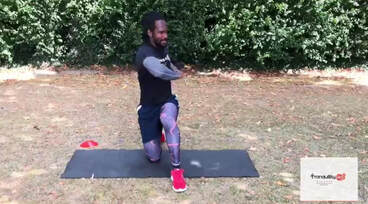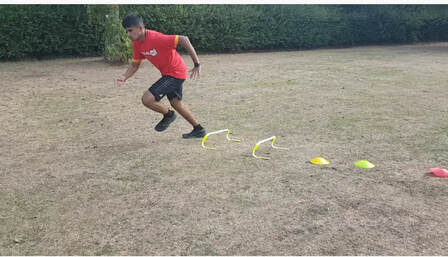 Calorie counts are probably the first thing you look at when you look at a nutrition facts label. However, to get a better understanding of a product or meal, it’s helpful to look at macro-nutrients. Food provides energy in the form of calories (which are called kilo calories). All foods provide calories, whether they have a nutrition label or not—and all foods have macros, too. Macro-nutrients Macro-nutrients are defined as foods containing nutrients that your diet requires in large amounts. (Micro-nutrients, by contrast, are substances required in much smaller amounts such as vitamins, minerals, and electrolytes.) The three macro-nutrients that humans need to survive and thrive are carbohydrates, proteins, and fats —you need all three, at least in some capacity. Carbs Carbohydrates provide us with quick energy, especially during exercise and if we get hungry in between meals. When we eat carbs, they are converted to glucose (sugar) in our body and are either used immediately or stored as glycogen for later use. Carbs also promote digestive health because carb-heavy foods are often packed with fiber. Some examples of foods high in carbohydrates include grains, potatoes, fruits, milk, and yogurt. Other foods like vegetables, beans, nuts, and seeds also contain carbohydrates, but not as many as starchy foods do. Proteins Proteins are the building blocks of many structures in our body. The protein we consume in our diet helps us grow, build muscle, repair injuries, produce hormones and enzymes, and fight illnesses, among other functions. Protein-packed foods include poultry, beef, fish, cheese, soy products, and some starches and vegetables. Fats Finally, fats are essential to almost all our bodily processes. Dietary fat is required for our body to absorb any of the fat-soluble vitamins (vitamins A, D, E, and K) we consume. Fat is also essential for insulation during cold weather and for allowing us to go long periods of time without eating. Plus, a certain level of body fat serves as a helpful energy reserve for endurance athletes. The Best Macro Ratio The federal dietary recommendations suggest that 45 to 60 percent of daily calories come from carbohydrates, 20 to 35 percent of daily calories come from healthy fats, and that the remainder come from proteins. These recommendations are because carbohydrates are the body’s main source of fuel and the easiest way for the body to convert food into energy (as compared to protein and fats). The fat recommendation stems from the essential regulation properties of dietary fat. However, every person is different. Many people thrive on a low-crab diet, while others feel like they need more carbs to function. Similarly, some people may do well on a high-protein diet, and others might get an upset stomach from too much protein. Calories in Macros Each macro-nutrient provides a number of calories per gram. Calories in Macro-nutrients
Please note that the following ranges are generalisations. Specific macro trackers will vary in the proportion of macros they recommend depending on the certain diet being followed. Macros for Weight Loss A good daily macro-nutrient ratio for weight loss or fat loss is:
A good daily macro-nutrient ratio for building muscle or gaining weight is:
To maintain your current weight and body composition, a good macro-nutrient ratio to follow is:
Calculation The information above gives us macro ratios in percentages of total calories. However, nutrition information is given to us in grams, so we’ll want to figure out how many grams of each macro-nutrient to eat in a day. There are two ways to calculate your macro ratio. One way that may be more difficult is by using an equation.
Since you now have the calorie amount, all you have to do is divide the calorie number by each macro’s respective gram number. Based on the example above, this means 250 grams of carbs (1,000 divided by 4), 125 grams of protein (500 divided by 4), and 56 grams of fat (500 divided by 9). Luckily, you don’t have to do that all by yourself. The web is home to many macro calculators that will do this for you.
0 Comments
 Since the dawning of Covid19 the rise of online trainers and fitness experts as gone through roof, which is not a bad thing for the population, with 7 out every 10 people in the population are unhealthy. However, information that’s are floating about on the internet can be dangerous. I have seen trainers telling people they can eat whatever they want as long as they can create that calorie deficit, not taking the long term effects, the most saddest one I have seen so far is trainers say people don’t need to warm up, “ WOW”. You might be eager to leap into your exercise routine and get on with the day but don't just dive in. Starting a workout with "cold" muscles can lead to injury. It's important to start each workout with a warm-up and end with a cool-down and that goes for true beginners, seasoned pros, and everyone in between. Warm-up Warming up pumps nutrient-rich, oxygenated blood to your muscles as it speeds up your heart rate and breathing. A good warm-up should last five to 10 minutes and work all major muscle groups. For best results, start slowly, then pick up the pace. Many warm-up routines focus on cardio and range-of-motion exercises, such as jumping jacks and lunges. If you prefer, you can do a simpler warm-up by walking in place while gently swinging your arms, or even dancing to a few songs. Cool-down After your workout, it's best to spend five to 10 minutes cooling down through a sequence of slow movements. This helps prevent muscle cramps and dizziness while gradually slowing your breathing and heart rate. An effective cool-down also incorporates stretching exercises to relax and lengthen muscles throughout your body and improve your range of motion. To get the most out of these exercises, hold each stretch for 10 to 30 seconds. The longer you can hold a stretch, the better for improving your flexibility. As with the warm-up, it's best to flow from one stretch to the next without rests in between. 
Metcon, or metabolic conditioning, is a method of exercise training that involves a high work rate and is designed to increase your fitness and energy output. Metcon workout routines use exercises that are designed to burn more calories during your workout as well as maximise calories burned after you exercise.
You can incorporate this workout into your routine twice a week but should not do them on consecutive days. Some high-performance coach would add a metcon in the middle of the session for 5 to 10 minutes, to increase fitness level. Metcon can also standout on its own as a full workout. There’s a good chance you have an extra 20 minutes to spare throughout your day. Whether you wake up a few minutes earlier or make some time for this exercise routine after you’re done with work for the day. The good news is that even though the routines are super quick, you are still getting a ton of health benefits out of it. They are intense, so they don’t need to be a whole hour long. 20 minutes Metcon 3 workout explosive leg power · Single Arm Overhead Dumbbell Squats (8 reps either side) · Hurdle Step Overs into athlete ready position 20 seconds · 20m Quick acceleration sprint · Active Recovery 10 seconds · Repeat the process 10 times A Metcon workout is a series of different types of workouts combined to achieve all those amazing benefits, you can add a minimum of three 3 exercises and must have some form of cardiovascular workout.  When we sleep, our bodies repair and adapt to the stresses of exercise, helping your cells to regenerate for the next training session. Subsequently, research shows that the more you sleep, the more this regeneration process will take place, enabling your athletic performance to improve. DEEP SLEEP During deep sleep, the Human Growth Hormone is released to help your body repair damaged tissue and build stronger muscles. If you have insufficient deep sleep, your body will fail to recover, making it harder to achieve your potential at your next running session. HYDRATION As an athlete, it is important to be well hydrated but good hydration levels will also enable you to enjoy a good night’s sleep and speed up your recovery time. In general, we need to drink two to three litres of liquid each day. Your hydration levels are reflected in the colour of your urine, with pale yellow coloured urine indicating that you are within one percent of your optimal hydration level. WEIGHT LOSS Did you know that getting an enough sleep may boost the weight loss benefits of athletes? A good night’s sleep will help to keep your hunger signals under control, making it easier for you to maintain a healthy weight. CONCENTRATION Mental toughness is important for any athlete and sleep deprivation can have a negative impact when a runner train. Increased concentration enables you to focus on your pace and reduces your risk of injury from tripping over. HOW TO ACHIEVE A GOOD NIGHT’S SLEEP
|
AuthorsThis blog is updated by Tranquillity 360 fitness personal trainers, as well as other guest bloggers. Archives
July 2021
Categories |

 RSS Feed
RSS Feed